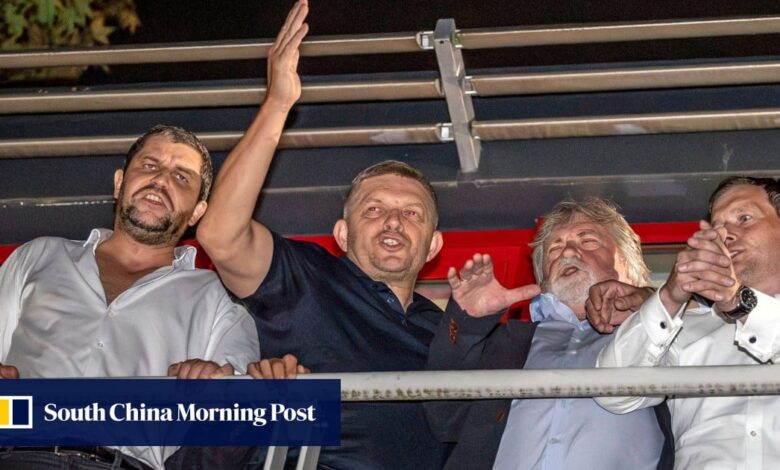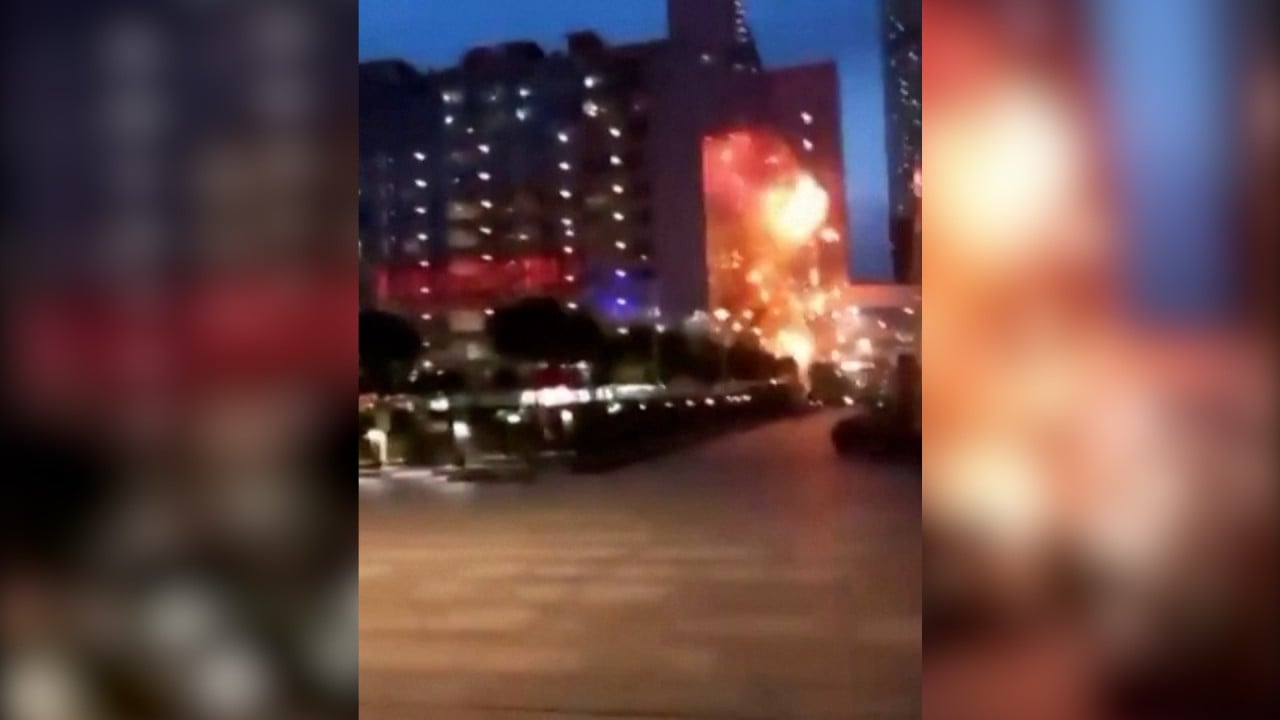Slovakia party opposed to Ukraine aid wins election, pro-Russia ex-PM needs partners to form government

[ad_1]
Smer is set to clinch 42 seats in the 150-member parliament and so will need coalition partners for a majority.
Ukraine’s Zelensky says joining Nato ‘matter of time’ after Stoltenberg meeting
Ukraine’s Zelensky says joining Nato ‘matter of time’ after Stoltenberg meeting
The left-wing Hlas-SD, which emerged in 2020 when a group of Smer lawmakers quit Fico’s party, is one potential partner, with an expected 27 seats.
Hlas is led by Peter Pellegrini, who became Slovakia’s premier in 2018 after Fico had to step down amid nationwide protests following the murder of journalist Jan Kuciak and his fiancée.
Kuciak uncovered links between the Italian mafia and Fico’s government in his last article published posthumously.
Pellegrini told reporters it was not a good idea to have two former prime ministers in a single government, but “that doesn’t mean such a coalition is impossible”.
Analyst Branislav Kovacik from Matej Bel University in the central city of Banska Bystrica said he expected Pellegrini to join a coalition.
“He may not sit in the cabinet. He may become the parliament speaker, he already did that in the past and did a good job.”
The two parties could team up with the nationalist Slovak National Party (SNS), which is expected to win 10 seats, for a parliamentary majority of 79 seats.

Fico already formed a government with the SNS, which is also opposed to military aid for Ukraine, twice in the past.
The election results open the prospect for Fico to win a fourth stint as premier after he led governments in 2006 to 2010, and 2012 to 2018.
Slovakia has been one of Europe’s biggest donors to Ukraine as a share of its GDP.
“We must carefully listen to what Fico is very openly saying,” independent analyst Grigorij Meseznikov said.
“He is spreading pro-Russian narratives and … that’s a serious thing. It won’t be so easy to make good on the threat, but … he will try, and we’ll be closer to Hungary then,” he added.
Hungary is seen as a troublemaker in the EU, frequently criticised over rule-of-law issues and hampering EU and Nato efforts to help Ukraine.
Slovakia’s next parliament will also include the centrist OLaNO party of maverick former premier Igor Matovic, in office in 2020-2021, who got involved in a fist-fight with a Smer member during the heated campaign.
OLaNO led a three-party coalition that is set to win 16 seats.
The centrist Christian Democrats and the right-wing SaS also garnered enough votes to have seats in parliament.
Voting for Smer in Bratislava, Eliska Spisakova said the party was “the natural choice for the working poor, people like me”.
“I have a high opinion of (Fico), he focuses mainly on the needs of us Slovaks,” she said.
The election campaign was marked by particularly high rates of online disinformation, often targeting Progressive Slovakia chairman Michal Simecka, a European Parliament vice-speaker.
A study by the Globsec think tank last year showed a majority of Slovaks believe popular conspiracy theories.
Slovakia emerged as an independent country in 1993, following a peaceful split with the Czech Republic after Czechoslovakia shed four decades of totalitarian communist rule in 1989.
Although many Slovaks have experience with the Moscow-steered communist regime, many have voted for populists who share Kremlin views.
Additional reporting by Reuters
[ad_2]
Source link






